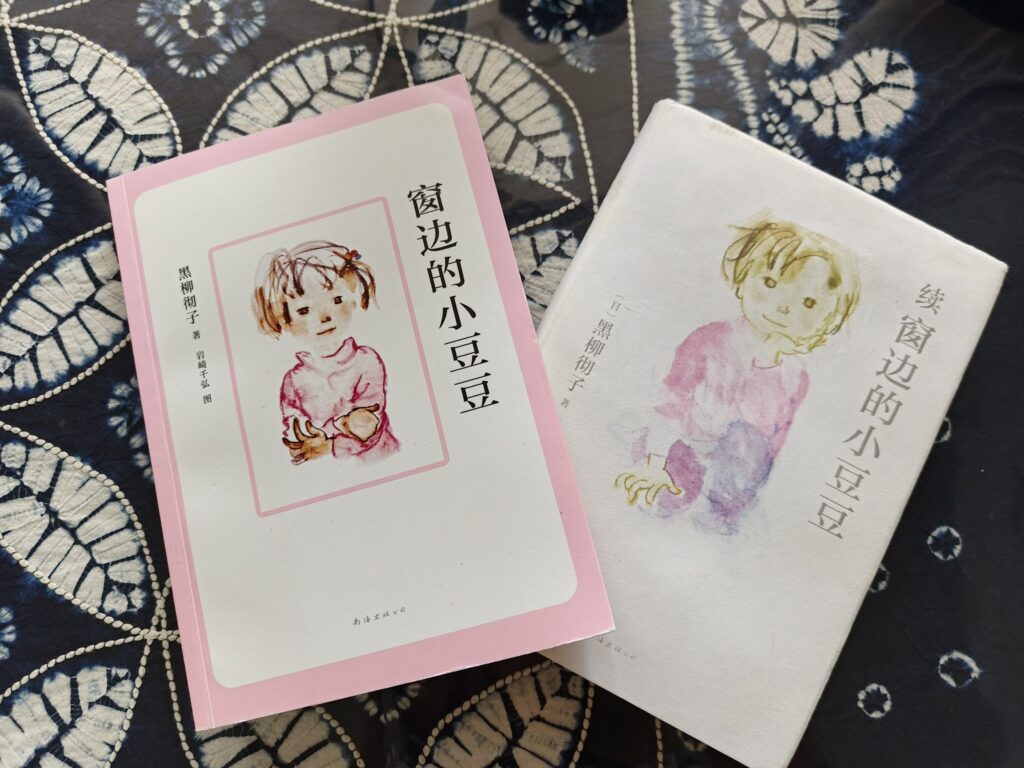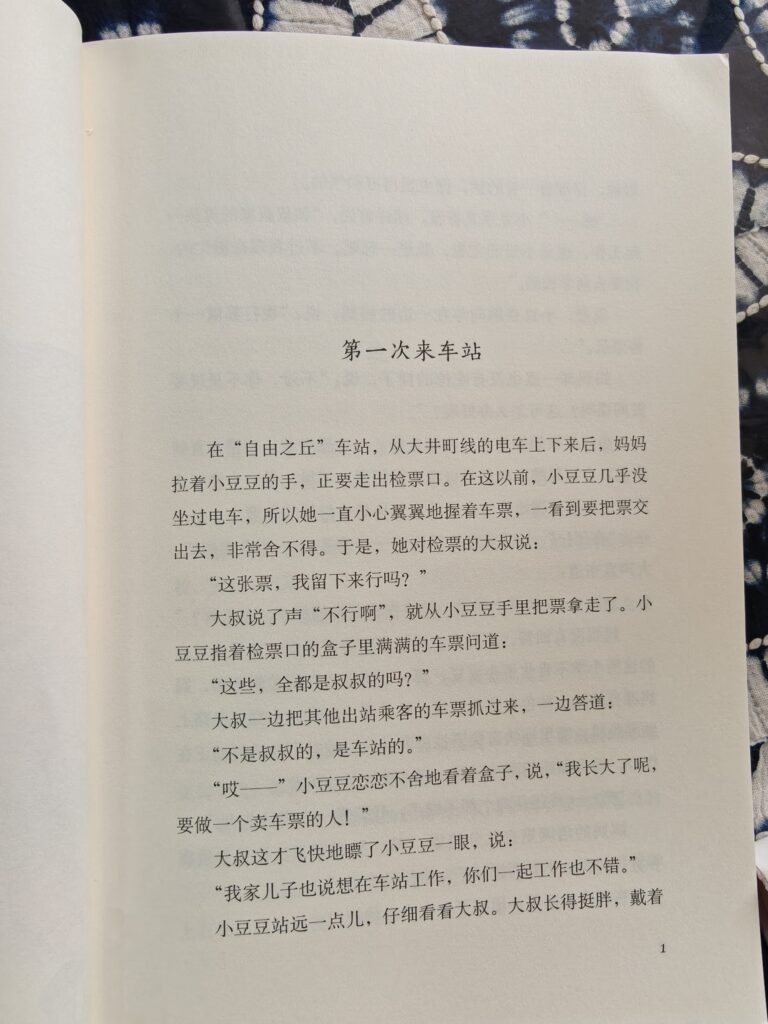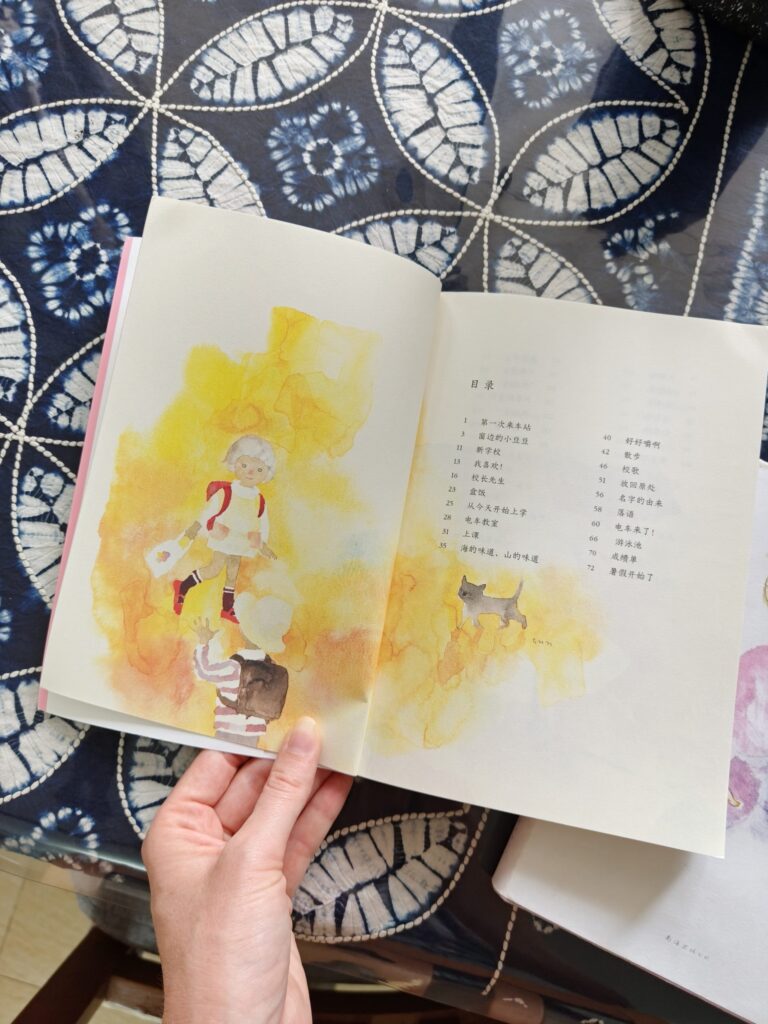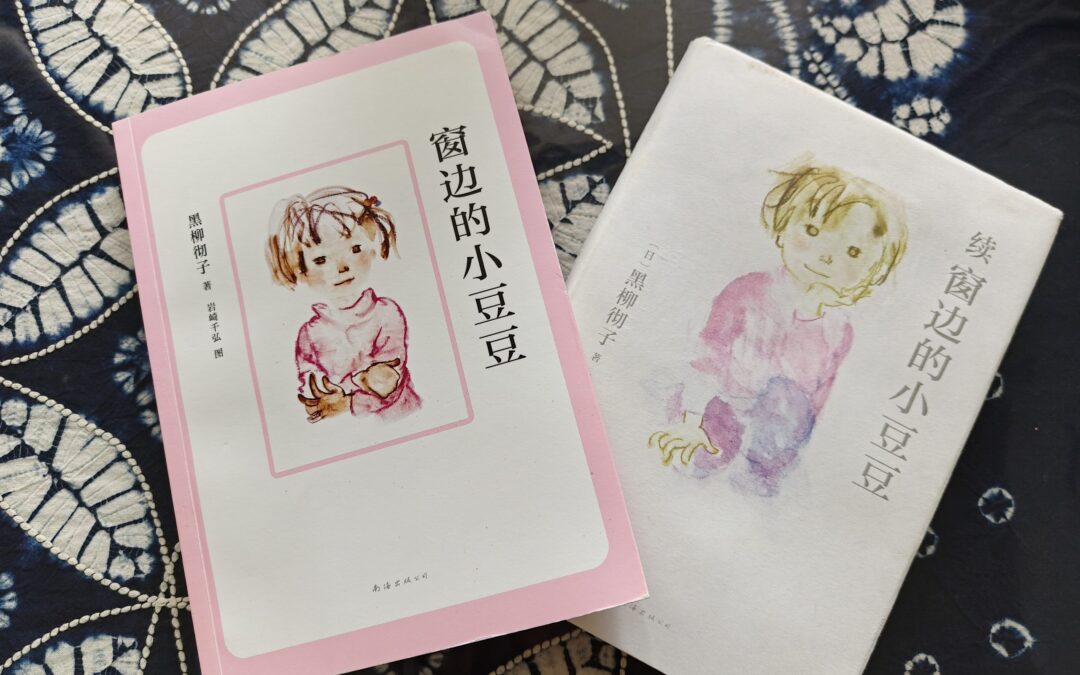As an avid reader, I really enjoy all kinds of books, and one of my favorite ways to learn Chinese is to read Chinese books. I prefer to read books written by Chinese writers, but if my friends recommend other books, then I also enjoy reading books that have been translated into Chinese from other languages.
My book recommendations for today were written originally in Japanese. I hadn’t ever heard of the book in English, so I figured I may as well read it in Chinese since it was sitting right there on the shelf at the bookstore when my friend, Clara, recommended it. The book is called 《窗边的小豆豆》(Chuangbian de Xiao Dou Dou, by Tetsuko Kuroyanagi; Totto-Chan: The Little Girl at the Window, translated into English by Dorothy Britton)

I bought the book and not long afterwards I started reading it. According to my custom, I read a page a day while I was eating breakfast, although the book was so engaging and the story was easy to follow so I would often read more than just one page.
The story follows a young girl, in Chinese she is called, 小豆豆 (Xiao Dou Dou; Small Bean). She is excited to go to school, but she has a hard time focusing on what the teacher is saying, and she is much more interested in all of the things happening outside of the window. She loves meeting and talking to random people on her way to and from school, and she is eager to learn. However, since she is not a typical “good student” who sits still and quietly listens to the teacher, her teachers struggle to know how to interact with her.
Her mom doesn’t discourage her or put her down but takes her out of the school and puts her in a less traditional school. I don’t want to give too much away because the book really is worth reading for yourself, but I love how the author talks about her years at the school and her interactions with her teachers and her other classmates. She has many close friends, and she loves to help and encourage other students who are struggling.
In many ways, Xiao Dou Dou reminds me of Anne of Green Gables. Her eagerness to talk and make friends are so similar to Anne. The book really was delightful to read. There were a few sections that talked about the philosophy of the school and why the principal wanted to create this kind of school, and those sections were a bit harder for me to follow, but overall, I really enjoyed the story, and even though the philosophy was difficult, I think it was also interesting.
After I finished 《窗边的小豆豆》, I started reading the second book that the author wrote. Although the books are autobiographical, the author writes about herself in the third person, but I don’t think that detracts from the personal nature of the story. 《窗边的小豆豆》was published in 1981, but the second book, 《续窗边的小豆豆》was published much later in 2023 even though the story picks up just about when the first one stops.
In the introduction to the second book, Tetsuko Kuroyanagi explains a bit about why she waited so long to write the second one. The first book is very happy and carefree. While Xiao Dou Dou has some struggles, much of her life is full of good times. WWII starts right at the end of the book, however, and that’s where the second book starts back up.
Xiao Dou Dou’s life at this time was quite challenging. She had to say goodbye to her father when he went to fight in the war, and they didn’t know if they would ever see him again. Her family had to leave Tokyo, and her mom had to take care of three kids while working. While this book wasn’t quite as carefree and fun as the first one, I think it’s a very important book to read.
Because of the darker nature of the second book, Kuroyanagi didn’t want to focus on that part of her life. She wanted to leave Xiao Dou Dou’s life bright and happy in the minds of her readers. But after many of those readers kept asking her to continue the story, she finally did. I’m thankful that she gave us the second part of her story, tracing the difficulties of war and then her journey in starting her career.
I can understand the author’s struggle in wanting to let the darkness stay in the past, but I admire and respect her for choosing instead to share that with us. I have learned about WWII in history classes, but reading about the struggles of a Japanese girl and her family during that time aren’t things that we talked about when we talk about WWII in history class. But this perspective is so important to understand that time period. I don’t want to get so lost in information and statistics and big pictures that I lose sight of the individual people who had to live through the nightmares of that time.
The second book was much harder to read. The content was deeper, and I encountered lots more Chinese words that I didn’t know. But I’m glad I got to read this book, and I enjoyed learning about life in another part of the world and from another perspective.
Last year when I was visiting one of my best friends in Japan, I mentioned that I was reading this book, and I asked her if she knew about it.
“Oh, yeah! We all know Totto-Chan!” Eri said.
“Really? Wow!” I was glad that by reading this book, I could also connect more with my friend.
“Yeah, when I was in middle school, I read the book.”
Well, I’m a bit late to read these books since my middle school years were quite a few years ago, but I’m really thankful for the chance to read them now. And I strongly recommend these books for people who want to improve your Chinese through reading. I especially recommend the first book. The second one is powerful, but the language is a little more complicated.
My Chinese level is around HSK level 5, but if you are a bit lower than that, you could probably enjoy the first book. If your level is a bit higher than that, you would probably enjoy the second one even more than I did.
Quick Facts:
Book 1 Title: 《窗边的小豆豆》
Pinyin: Chuangbian de Xiao Dou Dou
Author: 黑柳彻子
Pinyin: Hei Liu Che Zi
English Title: Totto-Chan: The Little Girl at the Window
Book 2 Tittle: 《续窗边的小豆豆》
Pinyin: Xu Chuangbian de Xiao Dou Dou



